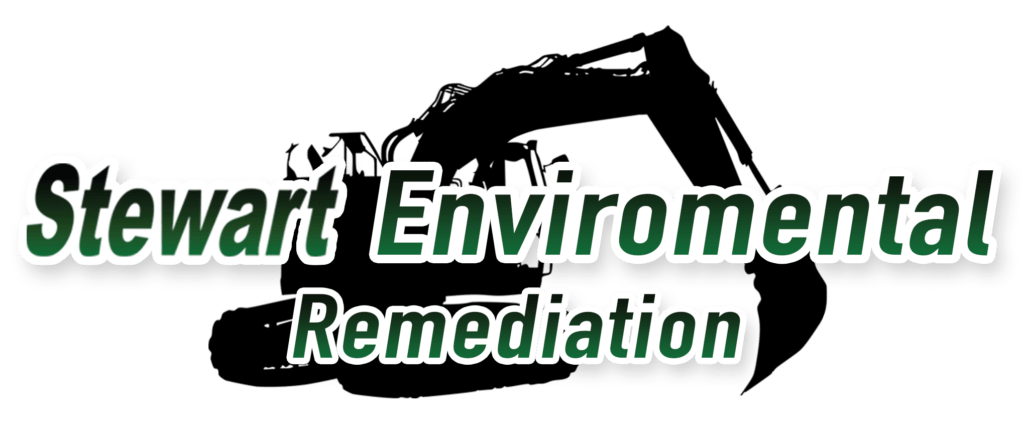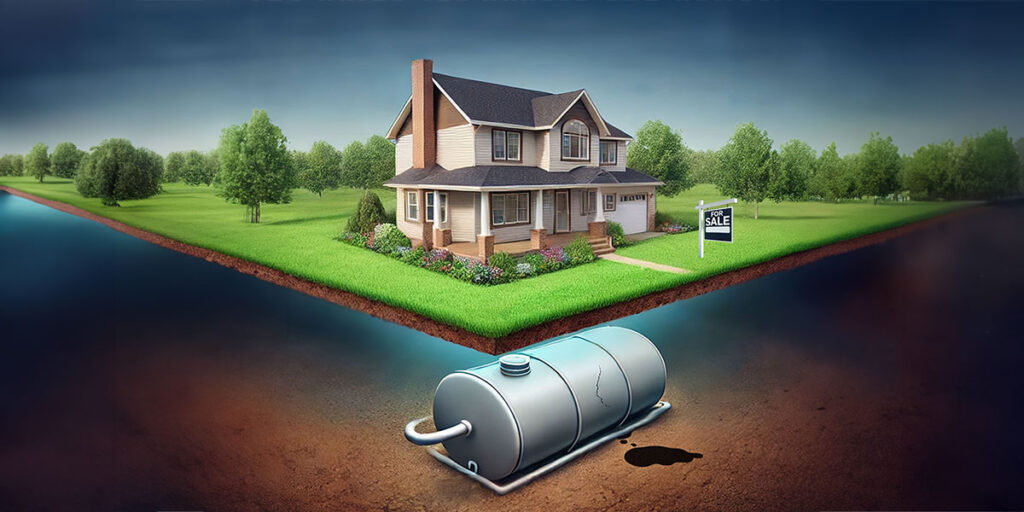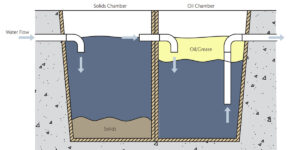Introduction
Underground oil tanks were once a common feature in both residential and commercial properties, especially in areas where oil was the primary source of heating. As energy technologies evolved, many property owners transitioned to alternative heating methods, leaving these tanks unused and often forgotten. However, when it comes time to buy or sell a home or business, an underground oil tank can pose significant challenges. This guide explores the issues associated with selling a property that has an underground oil (gas, diesel, waste oil) tank and provides actionable steps you can take.
Environmental Risks
Soil Contamination
Over time, underground oil (gas, diesel, used oil) tanks can corrode and develop leaks, releasing oil into the surrounding soil. This contamination can:
- Harm local ecosystems: Affecting plant life and wildlife.
- Spread to neighboring properties: Creating broader environmental issues.
- Require costly remediation: Involving soil excavation and disposal.
Groundwater Pollution
Leaked oil can seep into groundwater, leading to:
- Water supply contamination: Affecting wells and municipal water sources.
- Health hazards: Posing risks to humans and animals consuming contaminated water.
- Regulatory action: Prompting investigations by environmental agencies.
Legal Implications
Environmental laws often hold property owners responsible for contamination, leading to:
- Fines and penalties: For non-compliance with environmental regulations.
- Cleanup orders: Mandating immediate remediation efforts.
- Legal liability: Including lawsuits from affected neighbors or entities.
Financial Implications
Decreased Property Value
An underground storage tank can:
- Lower buyer interest: Due to perceived risks.
- Reduce sale price: Buyers may negotiate heavily or expect discounts.
- Extend time on the market: Making it harder to sell the property quickly.
Cost of Removal and Remediation
Expenses can add up quickly, including:
- Tank removal: Professional services are legally required for safe extraction.
- Soil testing: To assess the extent of contamination.
- Environmental cleanup: Potentially involving extensive and expensive remediation efforts.
Potential Fines and Penalties
Non-disclosure constituted as fraud and/or failure to address the tank can result in:
- Regulatory fines: From local or state environmental agencies.
- Legal fees: If sued by buyers or affected third parties.
- Increased insurance premiums: Or denial of coverage altogether.
Legal and Regulatory Issues
Disclosure Requirements
Sellers are often legally obligated to:
- Inform buyers: About the presence of an underground oil tank.
- Provide documentation: Of any inspections, removals, or remediations.
- Complete disclosure forms: Accurately reflecting the property’s condition.
Compliance with Regulations
Failure to comply can lead to:
- Legal action: From buyers or government agencies.
- Sale delays: Until compliance issues are resolved.
- Invalidation of the sale: In extreme cases where non-disclosure is proven.
Liability for Existing Contamination
Even after selling, you may be held responsible for:
- Cleanup costs: If contamination is discovered post-sale.
- Damages: Awarded to affected parties.
- Regulatory penalties: For prior non-compliance.
Insurance Challenges
Difficulty Obtaining Coverage
Insurance companies may:
- Refuse coverage: Due to the high risk of claims.
- Exclude tank-related incidents: Leaving you unprotected.
- Charge higher premiums: To offset potential risks.
Policy Exclusions
Existing policies might not cover:
- Environmental damage: Resulting from oil leaks.
- Third-party claims: Such as lawsuits from neighbors.
- Cleanup costs: Associated with soil or groundwater remediation.
Impact on Buyers
Potential buyers might face:
- Insurance hurdles: Making it difficult to secure property insurance.
- Mortgage issues: Lenders may deny financing without proper insurance.
- Additional costs: For specialized environmental coverage.
Impact on the Sale Process
Reduced Buyer Pool
An underground oil tank can:
- Limit interested parties: Due to unknown status of tank condition.
- Attract lower offers: Reflecting the perceived risk and remediation costs.
- Cause deal failures: If issues are discovered late in the process.
Complications with Financing
Lenders typically:
- Require tank removal: Before approving a mortgage.
- Demand environmental assessments: Adding time and cost to the sale.
- Decline financing: Making it harder for buyers to purchase the property.
Negotiations and Concessions
Expect buyers to:
- Request price reductions: To cover removal and remediation costs.
- Ask for seller credits: At closing to address the issue.
- Include contingencies: In the contract for tank inspection and removal.
Steps to Eliminate Mortgage, Attorney and Insurance Issues
Tank Sweep
- Get a tank sweep or GPR (ground penetrating radar) inspection done if the existence of a tank is unknown.
Tank Removal
- Engage licensed professionals: Specialized in tank extraction if a tank existing or found during a tank sweep or GPR.
- Follow legal protocols: Ensuring compliance with all regulations.
- Secure necessary permits: Before commencing work, your licensed contractor will handle this for you.
Soil Remediation
If contamination is found:
- Develop a remediation plan: Your contractor and their subsurface evaluator (residential) or LSRP (commercial) to determine the best possible way forward incurring the least amount of cost as possible.
- Execute cleanup efforts: As per regulatory standards.
- Obtain clearance certificates from the DEP: Confirming successful remediation.
Documentation
- Keep all records: Of inspections, removals, and remediation.
- Provide transparency: Sharing information with potential buyers.
- Demonstrate compliance: To alleviate buyer concerns and facilitate the sale.
Conclusion
Selling a home or business with an underground oil tank presents numerous complications, from environmental and financial risks to legal and logistical challenges. The presence of such a tank can deter buyers, complicate financing and insurance, and potentially leave you liable for significant costs and legal actions.
Proactively addressing the issue by conducting professional inspections, removing the tank, remediating any contamination, and maintaining thorough documentation can significantly mitigate these risks.
By taking these steps, you enhance the marketability of your property and pave the way for a smoother, more successful sale.




